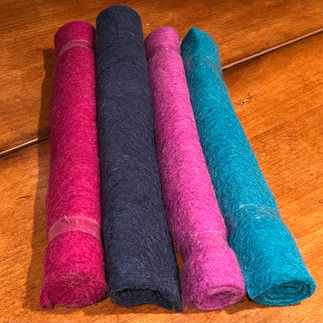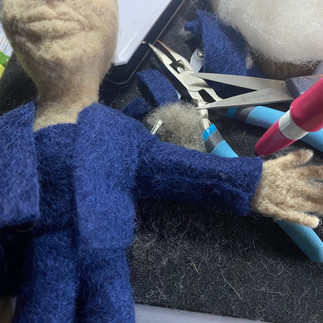
1973-present
Birthplace: Madison, Wisconsin
Lawyer
Voting Rights Activist
Politician
Author
Served in the Georgia House of Representatives
Founder of “Fair Fight”
Abrams’ parents participated in civil rights movements and advocated for their six children to participate in education and civic engagement. She grew up in Wisconsin, Mississippi and Georgia as a child. Both her parents became ordained Methodist ministers while Abrams was in high school.
In 1991 Abrams was chosen as valedictorian of her high school and invited to the annual valedictorians’ reception. Abrams and her parents traveled by bus to the governor’s mansion. At the security gate the guard told them to leave thinking they did not belong. This mistake was eventually corrected but the experience stuck with her. She says she doesn’t remember meeting the governor or the other valedictorians that day. All she remembered was a man at the gate telling her she didn’t belong. She would never let someone make her feel out of place again.
Abrams attended Spelman College, an all women's HBCU (historically Black college or university). While there she led protests against the Rodney King verdict, co-founded a group called the “Students for African American Empowerment” and attended protests in support of removing the Confederate flag from places of honor.
She graduated “magna cum laude'' with a B.A. in interdisciplinary studies (political science, economics, and sociology). Abrams then earned a master’s degree from Lyndon B. Johnson School of Public Affairs at the University of Texas at Austin, and a Juris Doctor degree from Yale Law School. Returning to Atlanta as a tax attorney, she was later appointed the Deputy City Attorney for Atlanta at age 29.
In 2006 Abrams was elected to the Georgia House of Representatives. In 2010 she became the House Minority leader – the first African American woman to do so in Georgia. She began advocating to increase educational opportunity, economic security, criminal justice reform, expanded Medicare and pushed for better understanding of mental illness. In 2013 while still a member of the Georgia House, she created a voter registration non-profit called The New Georgia Project, helping to complete 86,000 new voter applications.
Running for governor of Georgia in 2018 she lost by 55,000 votes, but again made history as the first African American woman to receive a major party’s nomination for governor. Allegations of voter suppression, particularly those targeted at the votes of African Americans during that election made Abrams vow she would not let voter suppression or lack of turnout affect the outcome of another race.
Abrams continues to advocate for and help with voter registration and founded Fair Fight in 2018. Fair Fight is an organization created to address the issues of voter suppression. Stacey Abrams is credited with being one of the major reasons for the Democratic wins in Georgia in the 2020 Presidential and Senate races. She ran for governor again in 2022 but was defeated.
She continues to be the face of voting advocacy around the country focusing on young voters and voters of color.
Her documentary is an important watch:
Abrams was nominated for the Nobel Peace Prize. She is an author of nonfiction, fiction, romance and children’s literature.
Stacey was fun to create. I found the perfect wool for her hair. The suit was made using pre felt wool. Her "Fair Fight" board was created by the talented bead artist Kim Boeckman who owns the Urban Bead Gallery.
"My being a black woman is not a deficit. It is a strength. Because I could not be where I am had I not overcome so many other barriers. Which means you know I'm relentless, you know I'm persistent, and you know I'm smart. " – Stacey Abrams
#Blackhistorymonth #Blackhistorymonth2023 #Staceyabrams #thewomen #fairfight #needlefelt #needlefeltingartist
Sources:
Fair Fight
National women’s history museum
Encyclopedia Britannica




























